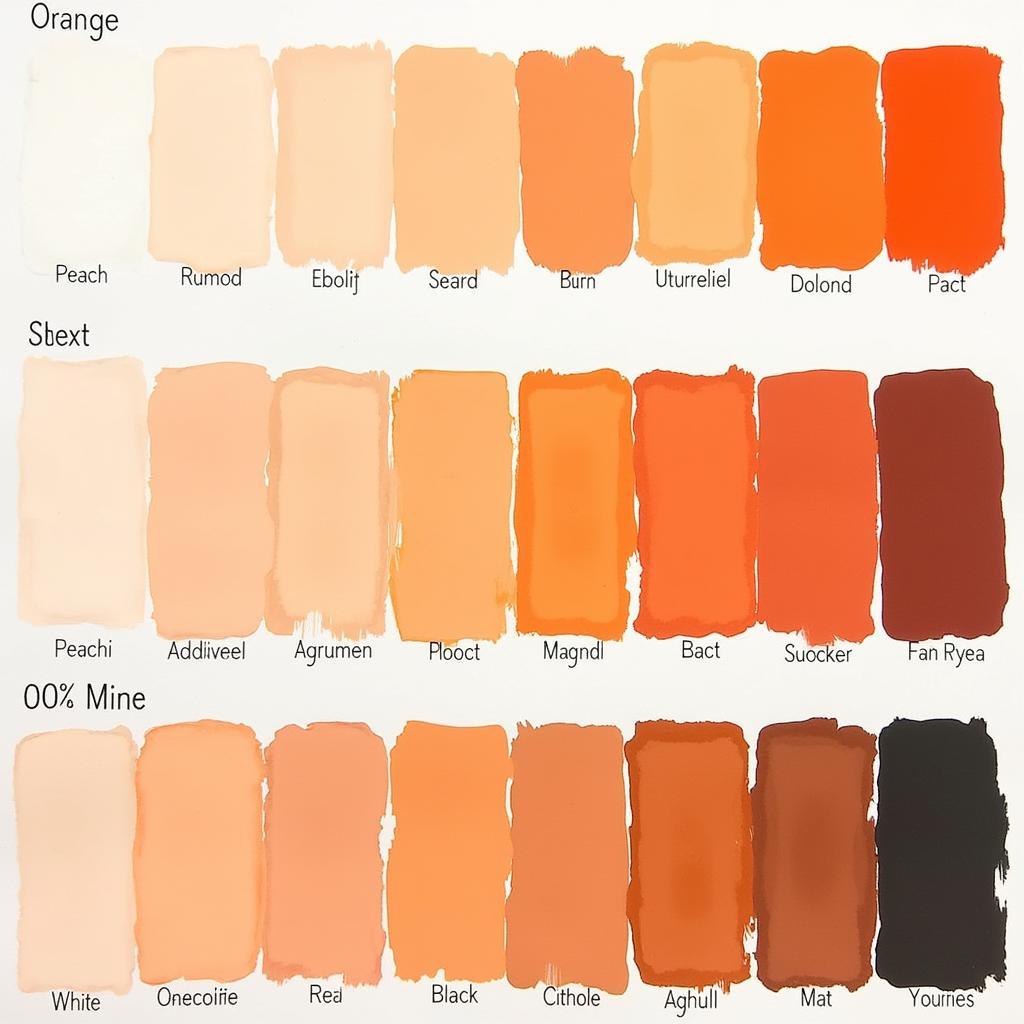Orange, a vibrant and energetic color, is a secondary color, meaning it’s created by mixing two primary colors. But which two? This article delves into the science and art of creating orange, exploring the different shades and hues achievable through various color combinations. We’ll uncover the secrets behind mixing the perfect orange, whether you’re an artist, a designer, or simply curious about the magic of color.
Understanding the Color Wheel and How to Make Orange
The color wheel is a fundamental tool for understanding color relationships. It arranges primary, secondary, and tertiary colors in a circular spectrum. To create orange, we focus on the two primary colors positioned on either side of it: red and yellow.
The simplest way to make orange is by mixing equal parts of red and yellow. However, the specific shade of orange you achieve depends on the type and intensity of your red and yellow pigments. A warm, cadmium red combined with a lemon yellow will produce a different orange than a crimson red mixed with a golden yellow.
 Mixing Red and Yellow to Create Orange
Mixing Red and Yellow to Create Orange
Exploring Different Shades of Orange
While equal parts red and yellow create a true orange, varying the ratios of these two colors allows you to explore a wide range of orange shades. Adding more red shifts the orange towards a reddish-orange, like a fiery sunset. Conversely, adding more yellow creates a yellowish-orange, reminiscent of a ripe mango.
Adding White and Black to Orange
Introducing white or black to your orange mix further expands the possibilities. Adding white creates lighter tints of orange, like peach or apricot, while adding black produces darker shades, like burnt orange or rust. Experimenting with these variations opens up a world of color nuances for artistic expression and design applications.
 Various Shades of Orange from Light to Dark
Various Shades of Orange from Light to Dark
Orange in Art and Design
Orange is a powerful color in art and design, evoking feelings of warmth, energy, and enthusiasm. Its versatility allows it to be used in a variety of contexts, from creating vibrant landscapes to designing eye-catching logos. Understanding how to mix and manipulate orange hues is essential for any artist or designer seeking to harness its expressive potential.
How do different reds and yellows affect the orange I create?
Different reds and yellows possess unique undertones that influence the final orange. For instance, a red with a bluish undertone mixed with a yellow with a greenish undertone may result in a slightly duller orange. Experimenting with different combinations of reds and yellows is key to discovering the specific nuances you desire.
“Using high-quality pigments is crucial for achieving vibrant and long-lasting orange hues,” advises renowned color consultant, Amelia Hues. “The quality of your materials directly impacts the richness and depth of the final color.”
Creating Orange Digitally
While the principles of color mixing remain the same, creating orange digitally differs from traditional mixing methods. Digital color systems, like RGB (Red, Green, Blue), use light to create colors on screens. In RGB, orange is typically achieved by setting red to its maximum value and green to a medium value, while keeping blue at zero.
“Digital color manipulation offers incredible precision and control over orange hues,” notes digital artist, Xavier Chromos. “With digital tools, you can fine-tune the color to the exact shade you envision.”
Conclusion
Understanding what colors make orange empowers you to explore a world of creative possibilities. By mastering the interplay of red and yellow, and experimenting with tints and shades, you can create the perfect orange for any project. Whether you’re painting a masterpiece or designing a website, the vibrant and versatile world of orange awaits your exploration.
FAQ
- What are the primary colors used to make orange? Red and Yellow
- How do I make a darker orange? Add black to your orange mix.
- What is a tertiary color? A color made by mixing a primary and a secondary color.
- Can I make orange with colored pencils? Yes, layering red and yellow will create orange.
- What is the RGB value for a true orange? Typically R:255, G:165, B:0.
- How does the quality of paint affect the orange color? Higher quality paints result in richer, more vibrant oranges.
- What color is complementary to orange? Blue
Related Topics on our Site
- Color Theory Basics
- Understanding the Color Wheel
- Mixing Colors for Beginners
Need help with your color project? Contact us at Phone Number: 0373298888, Email: [email protected] or visit us at 86 Cau Giay, Hanoi. We have a 24/7 customer service team ready to assist you.

